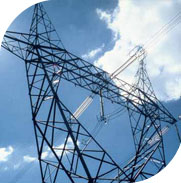
Operating
PERFORMANCE


In 2008, CTEEP began a pioneering project in electricity transmission grids, with the digitalization of substations
In 2008, CTEEP recorded an impressive operating performance, result of expansion investments and improvements carried out in its transmission system.
This result is borne out by one of the most important indicators for the analysis of the performance of companies in the electricity transmission sector: ENS is the ratio of energy not supplied to energy supplied, a measure of the level to which the needs of the market are met.
The Regional Energy Integration Commission (CIER), which includes the companies of the electricity sector in Latin America, sets the benchmark for this ratio at approximately 10-4 (one part in ten thousand). In Brazil, the target is 10-5 (one part in one hundred thousand), ten times better than the level set by CIER. Historically, CTEEP’s values have been in the 1 x 10-5 range, four times better than the Brazilian interconnected system average of 4 x 10-5, which demonstrates the efficiency of the services provided by the company.
Another indicator of this efficiency can be found in the fact that CTEEP, being responsible for the transmission of around 30% of the electricity produced in the country, has historically been responsible for less than 10% of the ENS of the Brazilian interconnected system.
During the year, a range of operational and maintenance activities were carried out, related to improvements and the reliability of the system.


